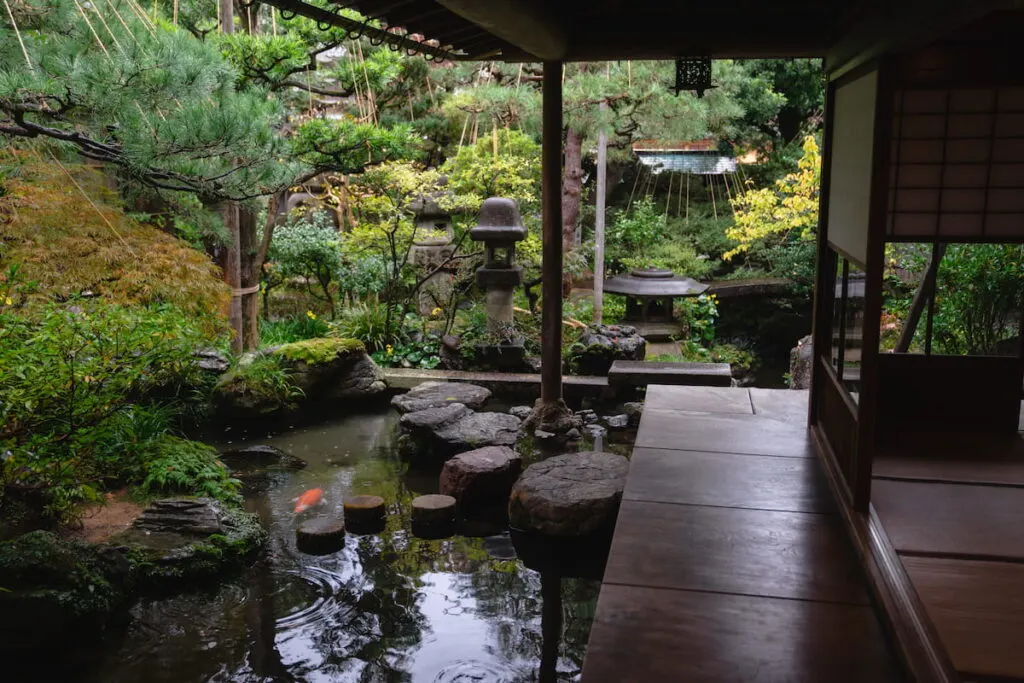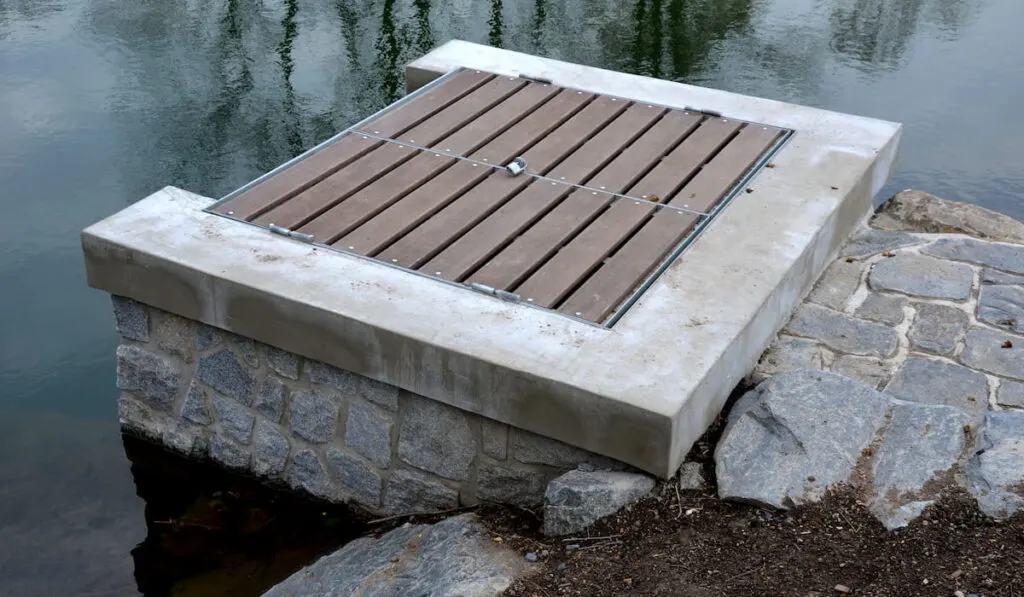Garden ponds can be incredibly beautiful and tranquil, but this beauty can become an eyesore after a storm, especially if you did not plan the pond carefully. You may be faced with debris and, occasionally, overflowing water.
Do garden ponds overflow when it rains?
Depending on the size and location of a garden pond, it can overflow with water, especially if you did not install drainage or overflow pipes. The pond overflowing can frustrate you because there are so many things to fix all at once, especially if you want your fish to continue living in the pond.
Why is it a bad thing when a pond overflows? How can you prevent a pond from overflowing? How do you construct the drainage of the pond? Read this article for all the details.
Table of Contents
Do Garden Ponds Overflow When It Rains?
This is a very common question among pond owners because they want to be prepared for the approaching weather.
Ponds overflow, but it is avoidable so long as you are proactive enough.
Some reasons why ponds can overflow are melting snow and heavy rain.
Why You Don’t Want Your Pond to Overflow
Should you permit the overflowing of water in your pond? Here are reasons why you should not:
1. Your Pond Fish Will Escape

Even though your fish look comfortable in the pond, they are always on the move. This is why you must protect the pond so that the fish do not get out (just as you do not want pests from getting in).
One terrific way to prevent your fish from going out is by preventing the pond water from overflowing.
When pond water overflows, fish can move out of the pond. You can lose a lot of fish this way, and some will even die, especially when the water does not flow to a drainage system.
2. The Surrounding Plants Will Suffocate
If you have flowers around your pond, you must make sure that the pond water does not overflow. If the water overflows, your plants and flowers can die because they are growing in a medium with too much water.
Even though overflowing water drains quickly, the plants might not survive it.

This is why you must plant your pond carefully. It makes little sense to plant around the lower side of your pond, so always plant on the higher side and install a drainage system and area on the lower side.
Also, try to grow plants that can grow in damp soil.
3. Your Yard Will Look Very Messy
When the pond starts to overflow, it is not only the fish that will swim out. You will see a lot of debris and algae in your yard.
These can be an eyesore, so you want to stop the water from overflowing. Also, it is good practice to clean your pond regularly so that algae does not grow in it.
4. The Growth of Pathogens and Insects Will Increase

Some organisms grow well in stagnant water.
This means that when the pond water overflows and gets trapped in another part of your yard, these organisms will start to multiply — some examples are bacteria, algae, and mosquitoes.
Remember that pond water is nutritious, so it can permit the exponential growth of these organisms.
Why were the organisms not growing in your pond? Well, the pond fish eat them, so they cannot grow in the pond. However, they can grow after the water overflows and there are no fish to control their populations.
5. You Will Be Frustrated
When you see your pond fish have all escaped, there is debris all over your yard, and your plants are dying, you simply will not know where to start from and this can cause frustration.
To prevent these events, why not carefully plan your pond to avoid the water from overflowing?
Continue reading to learn how to prevent the garden pond from overflowing.
How to Prevent Your Garden Pond from Overflowing
Here are some cool tips to prevent overflowing water in your garden ponds:
1. Determine If Your Pond Is Susceptible to Overflowing or Not
Here are some things that you should consider and plan:
- Pond size: The size of the pond determines the volume of potential runoff water. If the pond is not too big, you may not even need a drainage system in the first place.
- How much it rains in your area: If there is a lot of annual rainfall in your area, you need to build the drainage system (to be discussed later).
- The pond’s location: Ponds that are situated on lower ground will witness more overflow than ponds on higher ground.
Now that you know if your pond will overflow or not, here’s how you can prevent it from overflowing:
2. Always Remove Algae and Dirt from the Drainage Pipes

If you want the drainage system of your garden pond to stay functional, you need to remove debris and algae from it. Algae and debris can block the pipes and stop the flow of water.
You should clean your drainage system three or four times yearly or even more so that excess water can flow out quickly.
3. Cover the pond

You can cover the pond with a gazebo or tarp. A gazebo is very fancy, and a tarp is simple, but they both can prevent excess water from flowing into the pond.
When you combine the covering with a good drainage system, the pond shouldn’t overflow.
4. Discharge Water from the Pond When Not in Use

If there are no fish in your pond, it is best that you discharge the water and leave the pond dry. This can help ease the job of cleaning the pond because you do not need to worry about algae and aquatic plants when you are ready to introduce a new school of fish into the pond.
Draining the pond can also help keep the drainage system dry and free from algae.
5. Build Your Garden Pond on Higher Ground
Most ponds function as a point where rainwater flows to your yard. If you do not want to use your pond to catch rainwater, you can build it on higher ground.
In this case, water will not flow into the pond, and the pond will not overflow.
An extra advantage of having a pond on higher ground is that you can use it as water and nutrient reservoir for your garden plants (i.e., an irrigation system).
How do you construct the drainage system of your pond? Continue reading.
How to Construct a Pond Drainage System
Note: Make sure that you follow your city guidelines and collect necessary permits when building your pond.
The best way to construct your pond drainage system is to include an overflow kit.
An overflow kit is simply a pipe laid vertically or horizontally with its opening just above the maximum level you want the pond water to be.
This means that if you want your pond to hold fifteen inches of water, the opening of the pipe should be 15 or 16 inches above the base of the pond.
That way, when the water starts to overflow (i.e., to pass fifteen inches), the excess water will drain quickly through the pipes. Your pond overflow pipes should go to a nearby stream or storm drain.
Some Extra Tips to Help Prevent a Garden Pond from Overflowing
Here are some extra tips for you so that your pond will not overflow, and everything will go smoothly after a storm.
1. Put Gravel or Nets in the Drainage Pipe
You want to make sure that there are obstacles in the drainage pipes. Without these obstacles, your fish will pass through the pipes and escape from the pond.
Most pond owners use large gravel stones to block the pipes so that only water can pass through. However, others use netting or mesh over the openings.

Whichever you choose, make sure that the obstacles are large enough to prevent the fish from escaping.
Also, the obstacles should not block the entire pipe so that water can flow out easily.
Finally, you should make it a regular practice (three or four times yearly) to remove the rocks or net and wash them so that algae doesn’t clog the system.
2. The Edges of the Pond Should Be Higher Than the Pond
A reverse water flow occurs when water freely flows out of the pond instead of into the pond.
If you are using your pond to trap rainwater, it is important that the edges are several inches higher than the base of the pond so that when it rains, water will stay in the pond and not run off.
Even if you have a flat pond, you should construct it on a lower level so that water can flow into it and not out. Water should only flow out of the pond through the drainage pipes and never through the edges. Well, the design of your pond is up to you.
3. Check the Entire Pond After the Rain
After rain or a storm, you should go to the pond and check everything. This is important because it helps you to assess the damage (if any) of the storm.
Some things that you should check are:
- Pumps and aerator: You want to make sure that the equipment is still working. Try pumping or aerating the water even if you do not need to at the moment.
- Fish: If you can, count your fish to be sure that they are all still there. Examine the fish for behavioral changes as well.
- Water quality: Check the water pH, total dissolved solids (TDS) with a TDS meter, temperature, and other factors that affect the growth and health of your pond fishes and plants. If the factors are off balance, treat the pond water.
Now you are ready before and after a storm.
Conclusion
After reading this article, you can now be proactive. Even when it rains, your pond shouldn’t overflow, and your fish will stay happy in the pond because you have made it super comfortable for them. Try to make use of the tips in this article.
Resources
- https://www.watergardenadvice.com/how-to-stop-pond-overflowing-flooding
- https://gardeniaorganic.com/do-garden-ponds-overflow-when-rains/
- https://www.fao.org/fishery/docs/CDrom/FAO_Training/FAO_Training/General/t0581e/t0581e07.htm
- http://natureperfectlandscaping.com/how-excessive-rain-affects-your-pond/
